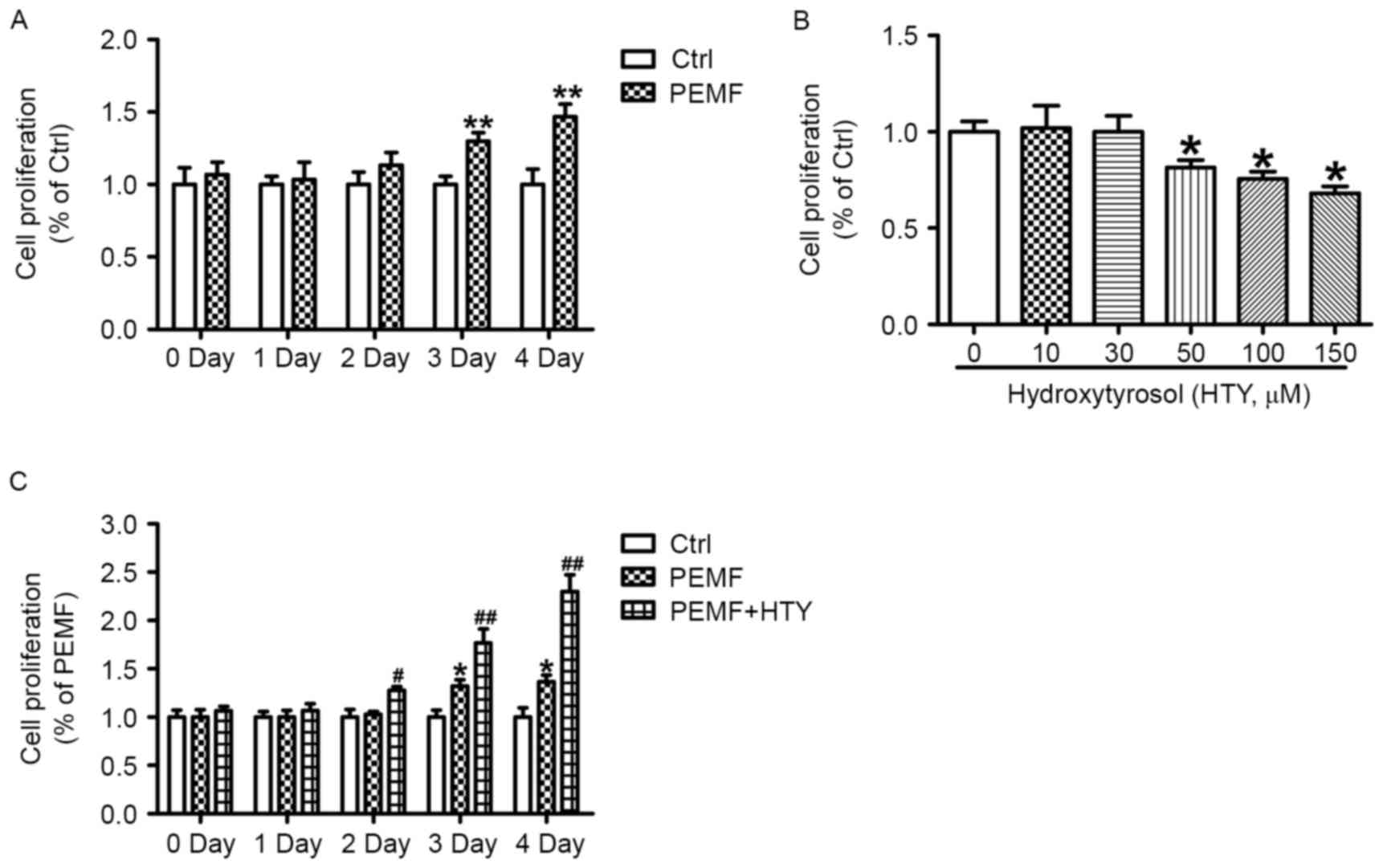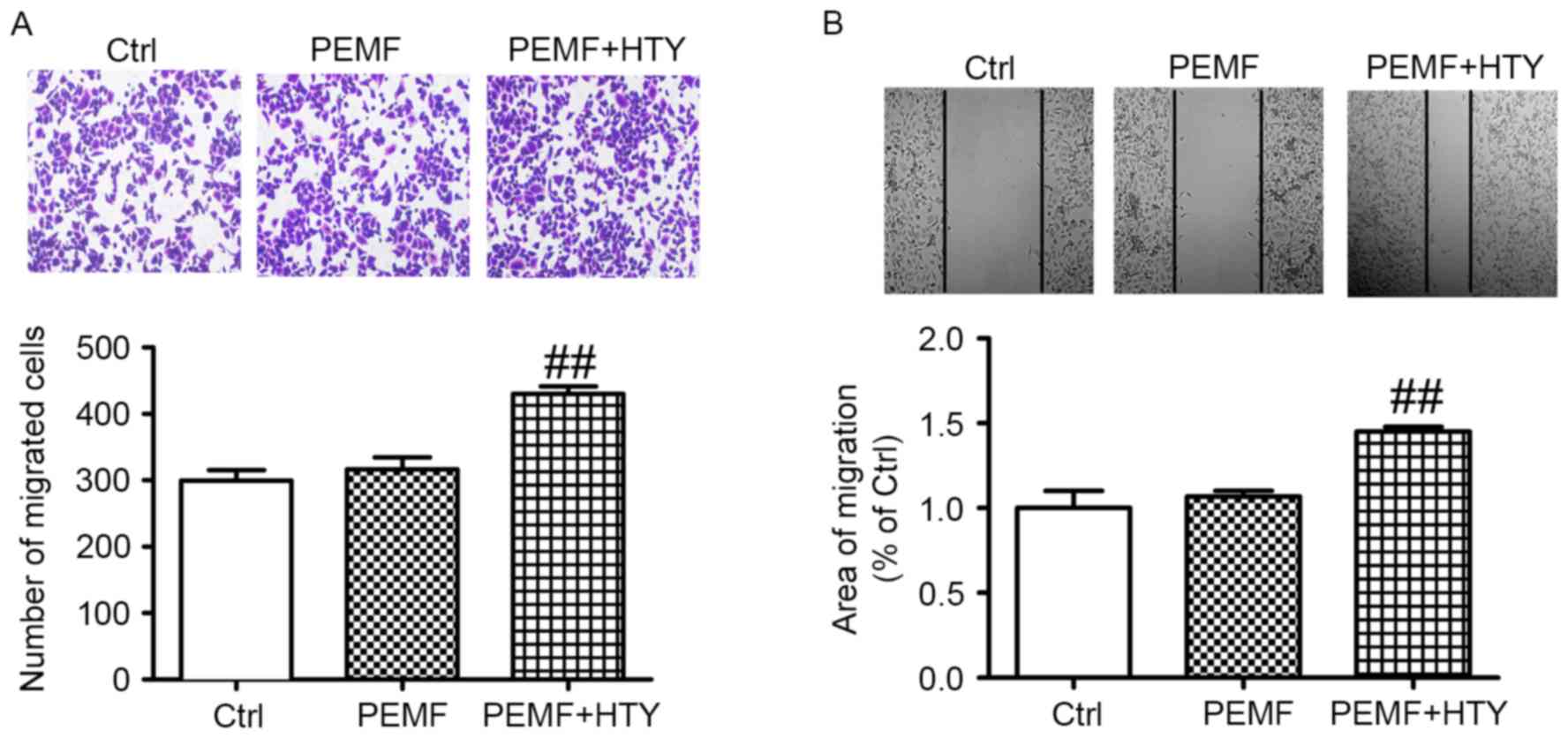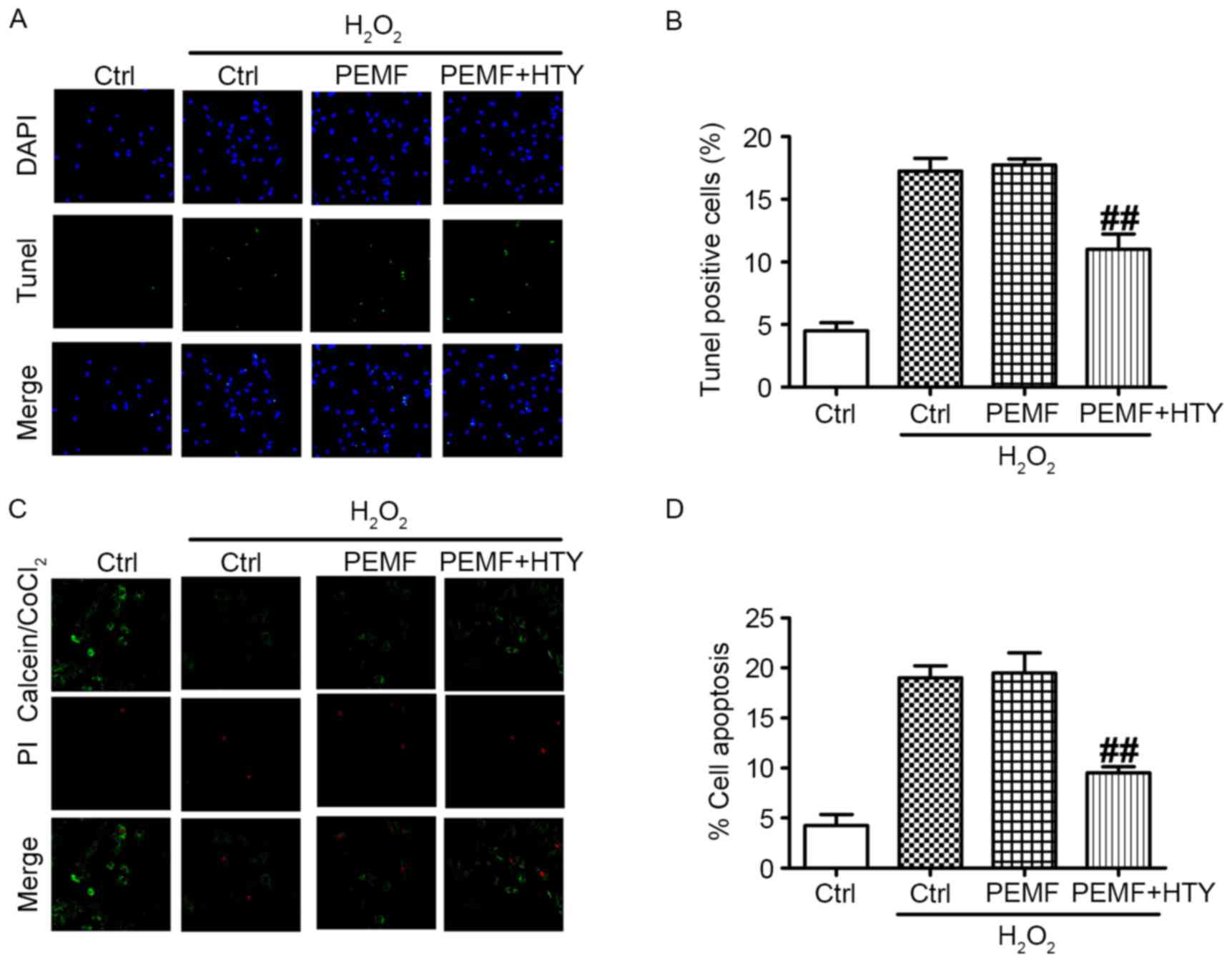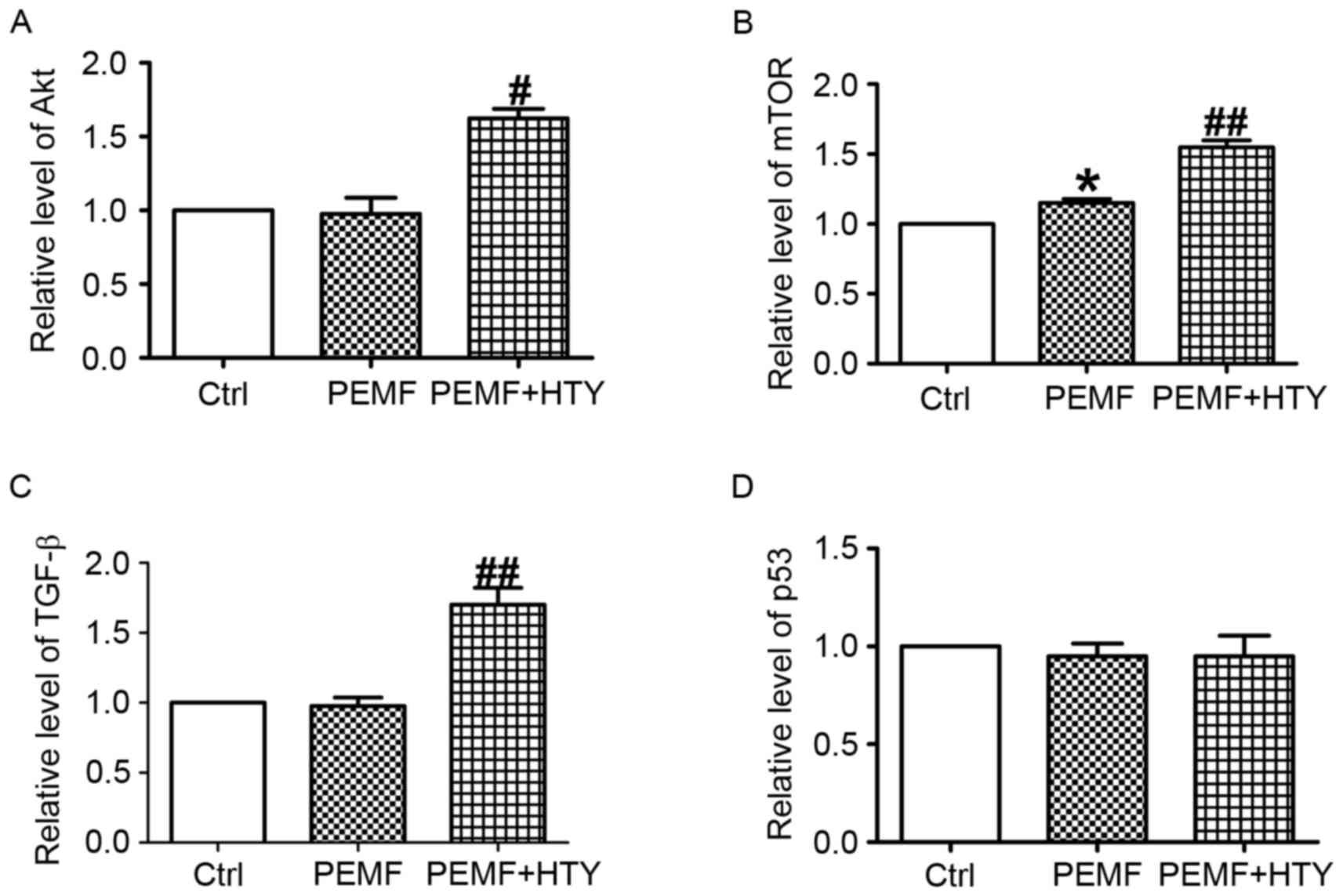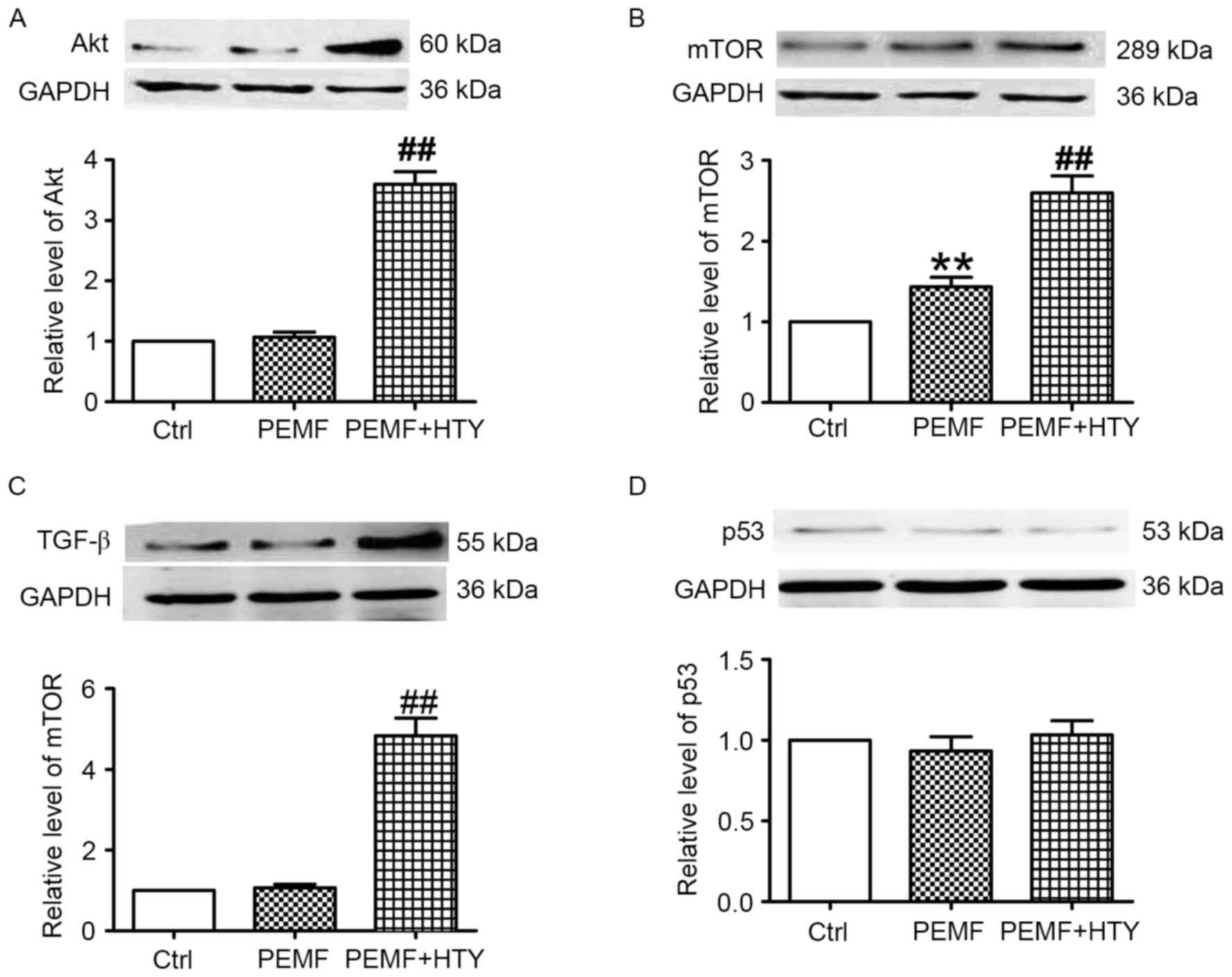|
1
|
Janis JE, Attinger CE and Lavery L:
Introduction to ‘current concepts in wound healing: Update 2016’.
Plast Reconstr Surg. 138(3 Suppl): 7S–8S. 2016. View Article : Google Scholar : PubMed/NCBI
|
|
2
|
Yoshida S, Yoshimoto H, Hirano A and Akita
S: Wound healing and angiogenesis through combined use of a
vascularized tissue flap and adipose-derived stem cells in a rat
hindlimb irradiated ischemia model. Plast Reconstr Surg.
137:1486–1497. 2016. View Article : Google Scholar : PubMed/NCBI
|
|
3
|
Athanasiou A, Karkambounas S, Batistatou
A, Lykoudis E, Katsaraki A, Kartsiouni T, Papalois A and Evangelou
A: The effect of pulsed electromagnetic fields on secondary skin
wound healing: Aexperimental study. Bioelectromagnetics.
28:362–368. 2007. View Article : Google Scholar : PubMed/NCBI
|
|
4
|
Monache S Delle, Alessandro R, Iorio R,
Gualtieri G and Colonna R: Extremely low frequency electromagnetic
fields (ELF-EMFs) induce in vitro angiogenesis process in human
endothelial cells. Bioelectromagnetics. 29:640–648. 2008.
View Article : Google Scholar : PubMed/NCBI
|
|
5
|
Li F, Lei T, Xie K, Wu X, Tang C, Jiang M,
Liu J, Luo E and Shen G: Effects of extremely low frequency pulsed
magnetic fields on diabetic nephropathy in streptozotocin-treated
rats. Biomed Eng Online. 15:82016. View Article : Google Scholar : PubMed/NCBI
|
|
6
|
Martino CF, Perea H, Hopfner U, Ferguson
VL and Wintermantel E: Effects of weak static magnetic fields on
endothelial cells. Bioelectromagnetics. 31:296–301. 2010.PubMed/NCBI
|
|
7
|
Li RL, Huang JJ, Shi YQ, Hu A, Lu ZY, Weng
L, Wang SQ, Han YP, Zhang L, Hao CN and Duan JL: Pulsed
electromagnetic field improves postnatal neovascularization in
response to hindlimb ischemia. Am J Transl Res. 7:430–444.
2015.PubMed/NCBI
|
|
8
|
Cheing GL, Li X, Huang L, Kwan RL and
Cheung KK: Pulsed electromagnetic fields (PEMF) promote early wound
healing and myofibroblast proliferation in diabetic rats.
Bioelectromagnetics. 35:161–169. 2014. View Article : Google Scholar : PubMed/NCBI
|
|
9
|
Goudarzi I, Hajizadeh S, Salmani ME and
Abrari K: Pulsed electromagnetic fields accelerate wound healing in
the skin of diabetic rats. Bioelectromagnetics. 31:318–323.
2010.PubMed/NCBI
|
|
10
|
Lamy S, Ben Saad A, Zgheib A and Annabi B:
Olive oil compounds inhibit the paracrine regulation of
TNF-alpha-induced endothelial cell migration through reduced
glioblastoma cell cyclooxygenase-2 expression. J Nutr Biochem.
27:136–145. 2016. View Article : Google Scholar : PubMed/NCBI
|
|
11
|
Morbidelli L: Polyphenol-based
nutraceuticals for the control of angiogenesis: Analysis of the
critical issues for human use. Pharmacol Res. 111:384–393. 2016.
View Article : Google Scholar : PubMed/NCBI
|
|
12
|
Zrelli H, Kusunoki M and Miyazaki H: Role
of hydroxytyrosol-dependent regulation of HO-1 expression in
promoting wound healing of vascular endothelial cells via Nrf2 De
Novo synthesis and stabilization. Phytother Res. 29:1011–1018.
2015. View
Article : Google Scholar : PubMed/NCBI
|
|
13
|
Scoditti E, Calabriso N, Massaro M,
Pellegrino M, Storelli C, Martines G, De Caterina R and Carluccio
MA: Mediterranean diet polyphenols reduce inflammatory angiogenesis
through MMP-9 and COX-2 inhibition in human vascular endothelial
cells: A potentially protective mechanism in atherosclerotic
vascular disease and cancer. Arch Biochem Biophys. 527:81–89. 2012.
View Article : Google Scholar : PubMed/NCBI
|
|
14
|
Ferroni L, Bellin G, Emer V, Rizzuto R,
Isola M, Gardin C and Zavan B: Treatment by Therapeutic Magnetic
Resonance (TMR) increases fibroblastic activity and keratinocyte
differentiation in an in vitro model of 3D artificial skin. J
Tissue Eng Regenerat med. 11:1332–1342. 2015. View Article : Google Scholar
|
|
15
|
Livak KJ and Schmittgen TD: Analysis of
relative gene expression data using real-time quantitative PCR and
the 2(-Delta Delta C(T)) method. Methods. 25:402–408. 2001.
View Article : Google Scholar : PubMed/NCBI
|
|
16
|
Goto T, Fujioka M, Ishida M, Kuribayashi
M, Ueshima K and Kubo T: Noninvasive up-regulation of
angiopoietin-2 and fibroblast growth factor-2 in bone marrow by
pulsed electromagnetic field therapy. J Orthop Sci. 15:661–665.
2010. View Article : Google Scholar : PubMed/NCBI
|
|
17
|
Osti L, Buono AD and Maffulli N: Pulsed
electromagnetic fields after rotator cuff repair: A randomized,
controlled study. Orthopedics. 38:e223–e228. 2015. View Article : Google Scholar : PubMed/NCBI
|
|
18
|
Kim YT, Hei WH, Kim S, Seo YK, Kim SM,
Jahng JW and Lee JH: Co-treatment effect of pulsed electromagnetic
field (PEMF) with human dental pulp stromal cells and FK506 on the
regeneration of crush injured rat sciatic nerve. Int J Neurosci.
125:774–783. 2015. View Article : Google Scholar : PubMed/NCBI
|
|
19
|
Bagnato GL, Miceli G, Marino N, Sciortino
D and Bagnato GF: Pulsed electromagnetic fields in knee
osteoarthritis: A double blind, placebo-controlled, randomized
clinical trial. Rheumatology (Oxford). 55:755–762. 2016. View Article : Google Scholar : PubMed/NCBI
|
|
20
|
Menini M, Bevilacqua M, Setti P, Tealdo T,
Pesce P and Pera P: Effects of pulsed electromagnetic fields on
swelling and pain after implant surgery: A double-blind, randomized
study. Int J Oral Maxillofac Surg. 45:346–353. 2016. View Article : Google Scholar : PubMed/NCBI
|
|
21
|
Guerriero F, Botarelli E, Mele G, Polo L,
Zoncu D, Renati P, Sgarlata C, Rollone M, Ricevuti G, Maurizi N, et
al: Effectiveness of an innovative pulsed electromagnetic fields
stimulation in healing of untreatable skin ulcers in the frail
elderly: Two case reports. Case Rep Dermatol Med.
2015:5765802015.PubMed/NCBI
|
|
22
|
Catalán Ú, López de Las Hazas MC, Rubió L,
Fernández-Castillejo S, Pedret A, de la Torre R, Motilva MJ and
Solà R: Protective effect of hydroxytyrosol and its predominant
plasmatic human metabolites against endothelial dysfunction in
human aortic endothelial cells. Mol Nutr Food Res. 59:2523–2536.
2015. View Article : Google Scholar : PubMed/NCBI
|



